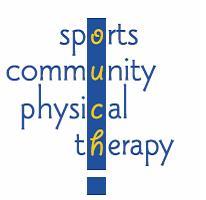Q: How well do disc replacements hold up in the long run? The one I have now is three years old and holding well.
A: Total Disc Replacement (TDR) in the lumbar spine (low back) for degenerative disc disease is becoming more popular as studies report good-to-excellent results. The device helps reduce pain while preserving motion and therefore offers a more functional treatment than spinal fusion.
There are several different types (brands) of disc replacement devices available now. More and more short- to mid-term studies are reporting their results. Most of the time, patient outcomes are measured in a variety of ways (not just one or two). Surgeons might use X-rays to confirm that the position of the device is holding.
The Visual Analog Scale (VAS) is often used to measure pain. The Oswestry Disability Index (ODI) helps measure function and sporting activity scale scores provide information on activity and recreation.
The Oswestry is one of the most popular tools used to measure before and after results of spine surgery including disc replacement. The researchers set a minimum number of points required for improvement on the Oswestry to be considered "improved" or "a success." Alternately, in another approach, patients are asked questions such as: 1) how satisfied were you with the results of surgery? (e.g., satisfied, very satisfied, dissatisfied, or very dissatisfied and 2) if you had to do it over, would you have the surgery again?
So far researchers are finding similar results. Between 80 and 90 per cent of the patients have excellent results with no complications and no adverse effects of the surgery. That is for the first two years. But after that time, results seem to decline a little bit every year out. In one study, five years later, only 71 per cent of the group were able to hang on to their good results.
Only 60 per cent of the patients said, 'Yes, if given the choice, I would have this surgery again.' The authors expected that statement of satisfaction to be higher to match the increase in function in at least the 71.4 per cent group. There were no complications or adverse events in either group making it seem like the perceived success should be higher longer.
As they looked back over the study, the authors of that particular study observed several things that might account for the disconnect between functional improvement and patient satisfaction. First of all, the cut off for a threshold of improvement using the ODI (15 points better = success) might be too conservative. A 10-point difference might have given a higher satisfaction rate while still registering significant improvements in function.
It's possible that the decline in improvements seen over time is typical of lumbar disc replacement surgery no matter who does the surgery and/or no matter which device is used. In this study, they only used one implant and therefore did not compare the mid-term results with other devices. At five years out, further study is still needed to assess the long-term (10 years or more) results. Future studies should also include a control group, which this one did not have.
Reference: Chun-Kun Park, MD, PhD, et al. Clinical Outcome of Lumbar Total Disc Replacement Using ProDisc-L in Degenerative Disc Disease. In Spine. April 15, 2012. Vol. 37. No. 8. Pp. 672-677.
Tel. 917-287-5127
Fax. 718-282-1955
We come to you!










